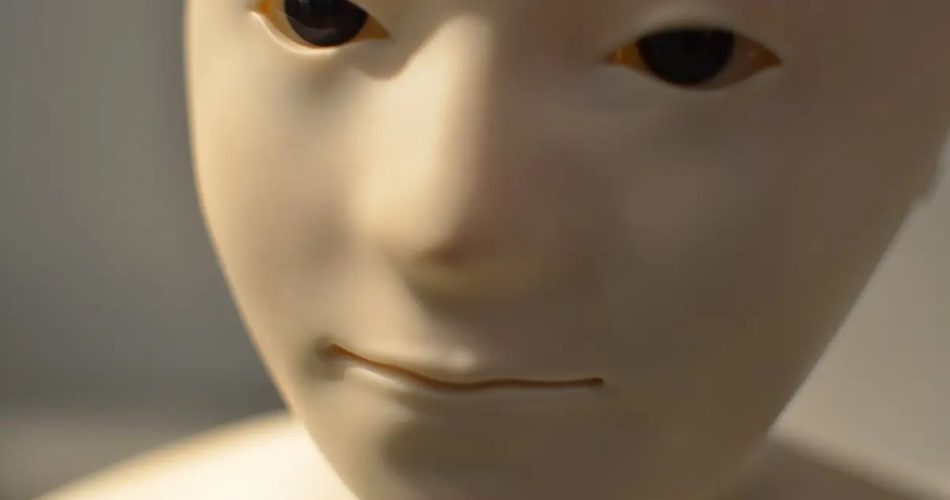Human-like robots are responsible for this feeling
Have you ever looked at a robot, a doll, or a puppet and felt uneasy, as if it was nearly too human-like? If that’s the case, you’ve entered what’s known as the Uncanny Valley. This is a theory that states that the more a thing acquires human characteristics, the more you perceive it as weird.
With the increasing development of human-like robots, this problem is going to affect an increasing number of people, therefore it must be taken into consideration, especially if we are going into a world where robots will be part of our daily lives.
However, the theory is not properly new. In fact, Sigmund Freud provided one of the more well-known psychological interpretations when talking about the ‘Uncanny’. Freud authored an article in 1919 on a weird emotion that humans experience that is triggered by particular objects.
Obviously, he wasn’t referring specifically to robots at the time, but he did mention lifelike dolls and other human-like figures, which would translate nicely to the current effect given by robots. This indicates that the feeling extends beyond robots and has been with us for a long time.
This feeling, according to Freud, might occur when there is a doubt about whether something inanimate has a soul that can easily be translated into the nowadays difficulty of telling whether a robot is human or not, especially when it looks so human.
According to Japanese roboticist Masahiro Mori and also reported in this article, the more human-like a robot appears, the more familiar it results, though. However, when an artificial agent becomes too much like a human, this leads to a sense of eeriness or repulsion, known as the Uncanny Valley theory.
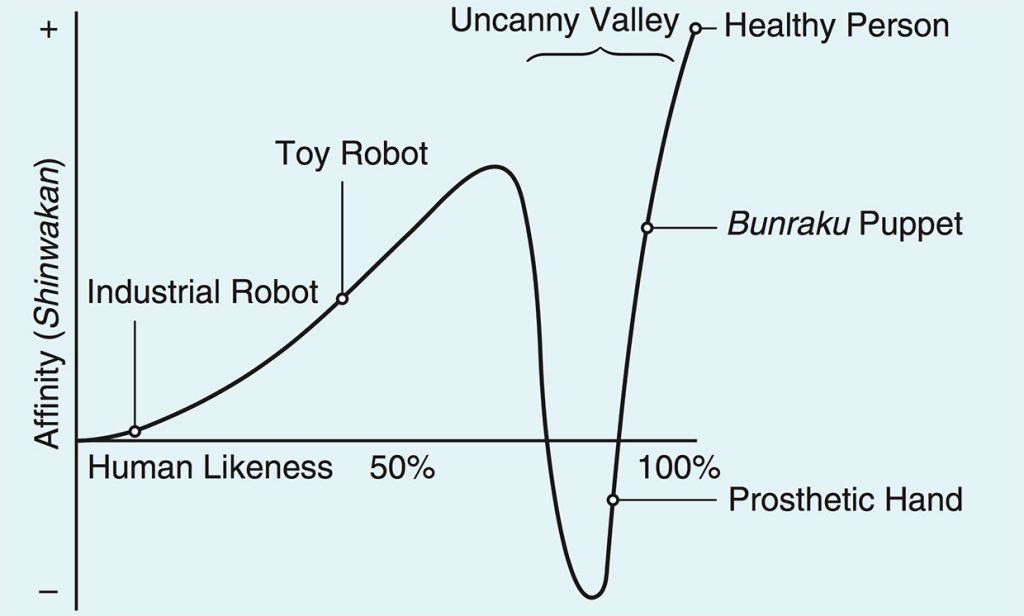
There has been no definite reason why we get this uneasy sense with realistic robots so far. However, there are a number of possible theories that have been considered, so, according to the neurological perspective, in a study published in 2019, cognitive psychologist Fabian Grabenhorst and a team of neuroscientists studied the neurological aspects of the Uncanny Valley, defining this phenomenon as a neural response to a particular combination of features.
“For example, you can imagine a neuron in a particular part of the brain that responds more strongly the more humanlike a social partner appears to be. That will be one of the starting points for computing the uncanny valley”, explained Grabenhorst.
The high human similarity paired with the fact that they are not human in any manner is the characteristic he speaks to.
The team used functional magnetic resonance imaging (fMRI), a technique of measuring variations in blood flow within different regions of the brain, to investigate brain patterns in 21 people during two independent tests in 2019.
During the first testing, participants were given photos of humans and a variety of robots, all of which had varying degrees of human appearance. The second test asked participants to choose which of these robots they would trust to choose a personal gift for them.
For this task, participants preferred humans and more human-like robots. The exception was those closest to the human/non-human line, with which the participants were uneasy.
The researchers determined that the activity was in areas related to processing, assessing social cues, and facial emotions by measuring brain activity during this task.
The medial prefrontal cortex is a region of the brain that runs along the midline of the frontal lobe. This region possesses a valuation system that judges stimuli, according to a previous study, and it’s been proven to signal the reward value of everything.
Two areas of the medial prefrontal cortex, a vital component of the brain for attention and senses, were found to be important for the Uncanny Valley in Grabenhorst’s study. The human-likeness signal was turned into a ‘human detection’ signal in one section, with this region over-emphasizing the boundary between humans and non-humans, reacting more positively to humans and less to manufactured figures.
On the other, they combined this signal with a likability rating, resulting in a separate pattern that closely reflected Uncanny Valley’s feelings.
Another theory suggests that robots that fall into the Uncanny Valley appear to be humans but with a noticeable flaw. Therefore, we perceive that there’s something wrong with the figure. That would be an evolutionary advantage.
This could provoke an evolutionary emotion of aversion or disgust, whether it’s because their skin appears lifeless, their features are distorted, or another somewhat off element. These feelings provide a survival advantage in avoiding infection or contamination by an ill human or animal.
So, the Uncanny Valley is the subject of several cognitive theories. The majority of them are about surviving.
Another idea proposes that the Uncanny Valley is created by an existential fear of being replaced by machines. This goes along with the premise that seeing a robot that looks like us but is plainly not human violates our expectations or conventions of what people and robots should look like.
This feeds into a concept known as ‘prediction error’, in which robots cause inaccuracy in our predictions of what a human should be, resulting in the unsettling feeling known as the Uncanny Valley.
Examples of uncanny robots
Sophia, Geminoid H1, Ai-Da, and Ameca are some of the latest robots that could make you feel uneasy.

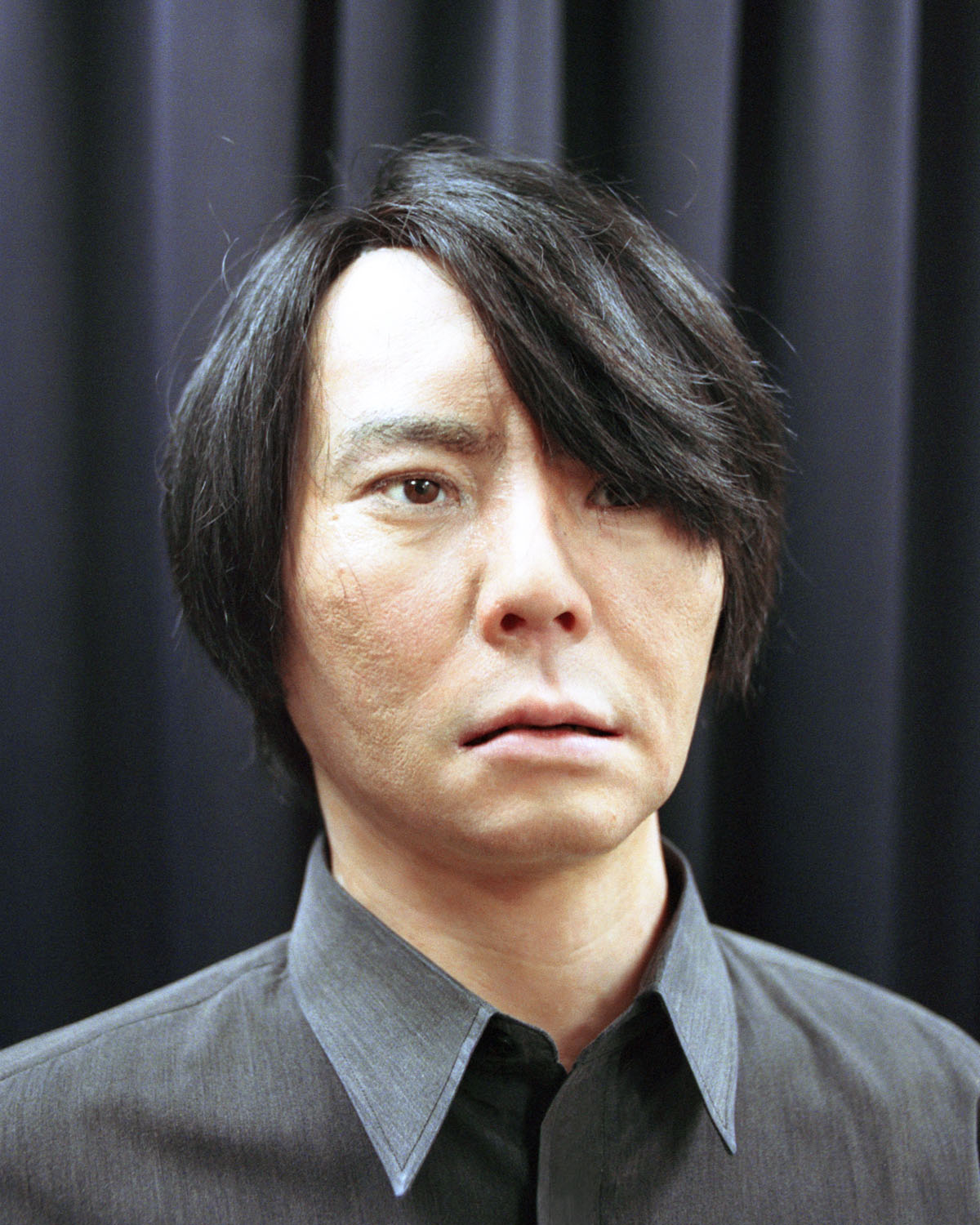
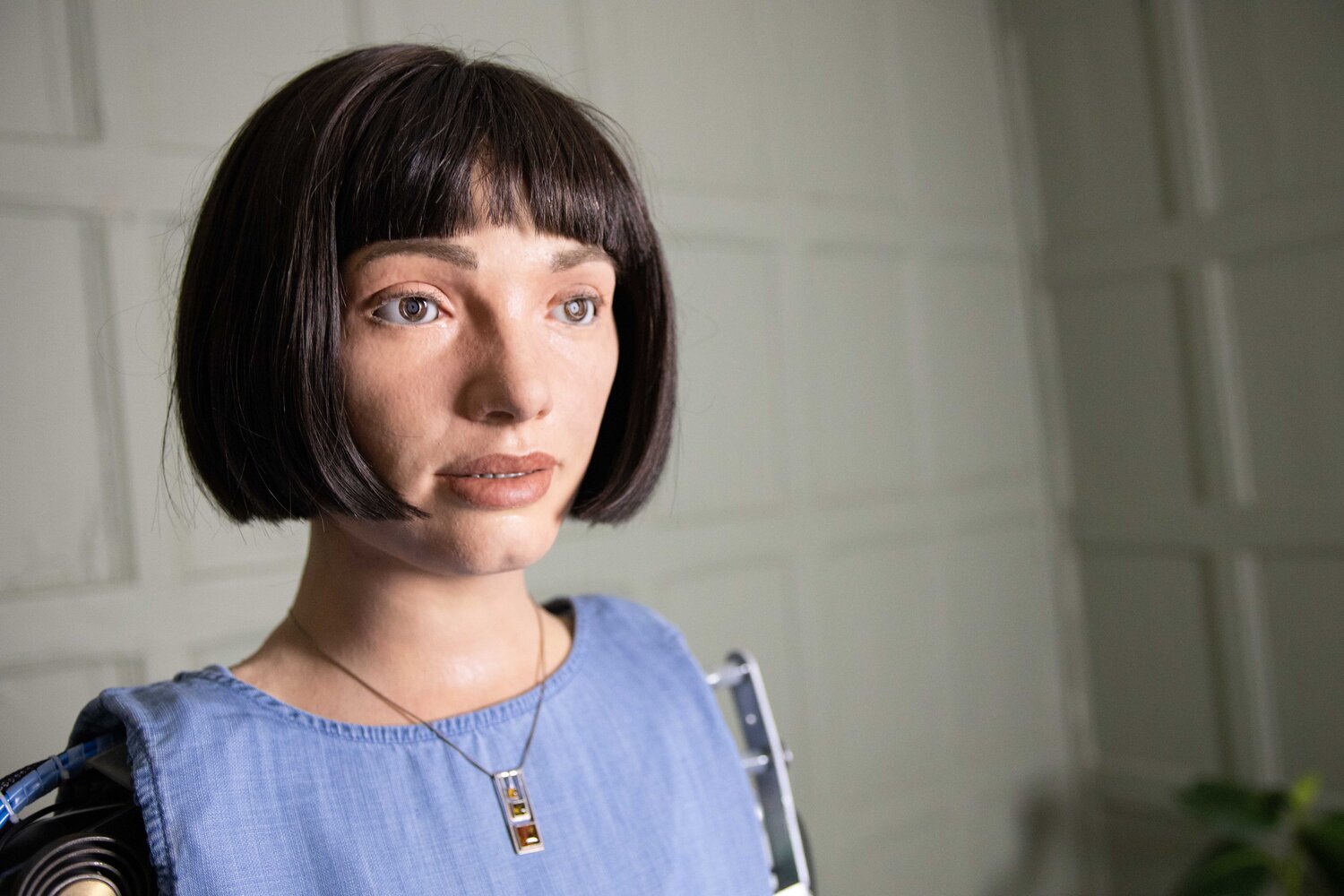
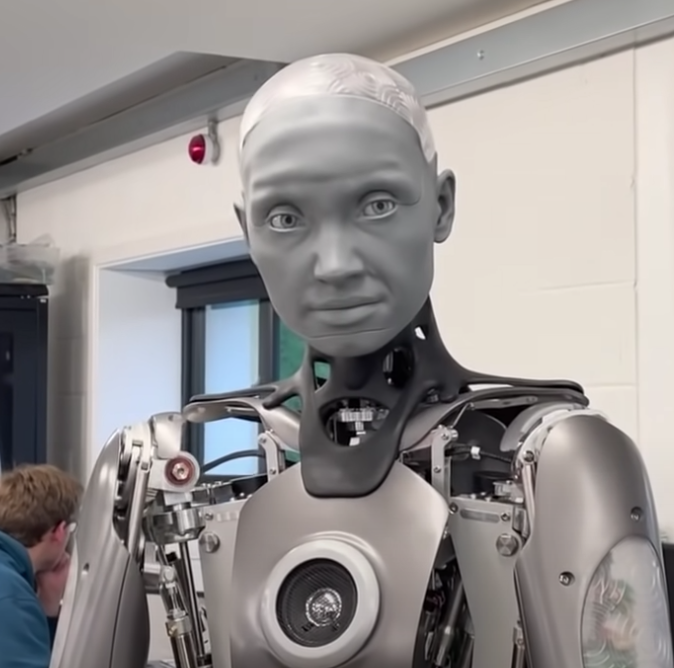
How can we control the Uncanny phenomenon while building a robot?
The greatest approach that researchers have found to do this so far is to explicitly state that you are interacting with a robot.
Morrie recommended roboticists make the artificial agents not too perfect. Emphasizing in the design that they are not humans would avoid this ambiguity.
For humans, there is a sense of comfort in this. When there are visible signs that it is a robot (exposed cables, metal pieces, etc. ), the uncanny effect partially decreases.
However, what if companies made ever more realistic robots anyway? May we simply get more comfortable with human-like robots as a result of our exposure?
“We know that the activity in the brain areas associated with the Uncanny Valley can be modified through experience, specifically also through social experience. That remains to be tested and would be a nice experiment to do”, says Grabenhorst.
“But one would predict that the activity in these brain areas would adapt over time as you have positive experiences with these human-like artificial agents. I wouldn’t rule out that there remains a residual tendency to dislike highly humanlike artificial agents though”, says Grabenhorst.

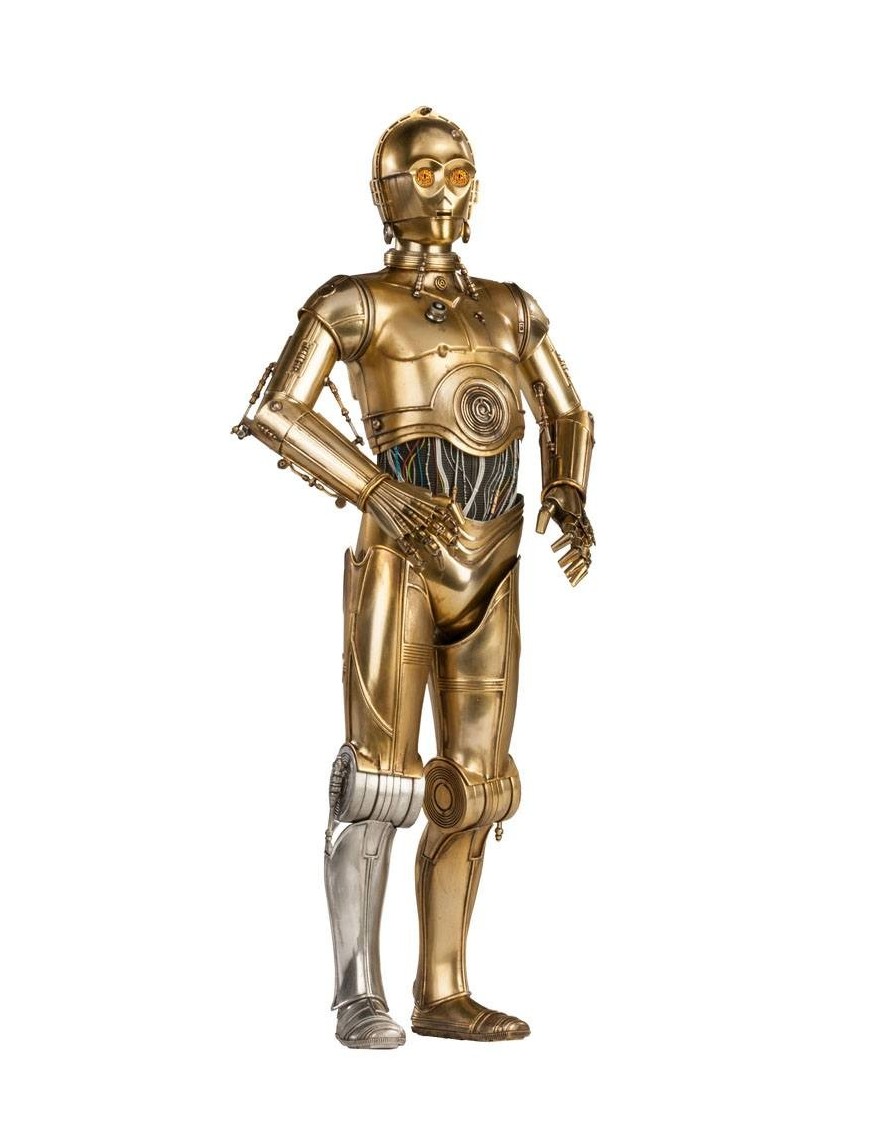
Personally, I don’t think knowing that a human-like robot is not a person would change the Uncanny feeling we experience, simply because they told me so or because I see some wires from its body. When we see a clown, we know he’s human but some feel uneasy anyway. If you happened to run into the two Star Wars robots, R2-D2 and C3-PO. Which one would be more uncanny? Maybe the latter, even though you know they are robots. Even a prosthesis can be perceived as uncanny, especially when they try to make it look like a real limb painted with that fake flesh color. That’s because knowing it’s a robot isn’t enough. I think this has to do more with trust, and the concept is more unconscious than conscious. You can tell me to trust something\somebody but I won’t necessarily do it.
For me, the solution is to make robots that don’t look like humans. We don’t need them to look like us. Their features can work the same way, and we’ll be able to distinguish a machine from a human without feeling uneasy. In addition, in the future, human-like robots may look so realistic that they could be indistinguishable from real people and that could be dangerous, like now synthetic faces are on the internet.
